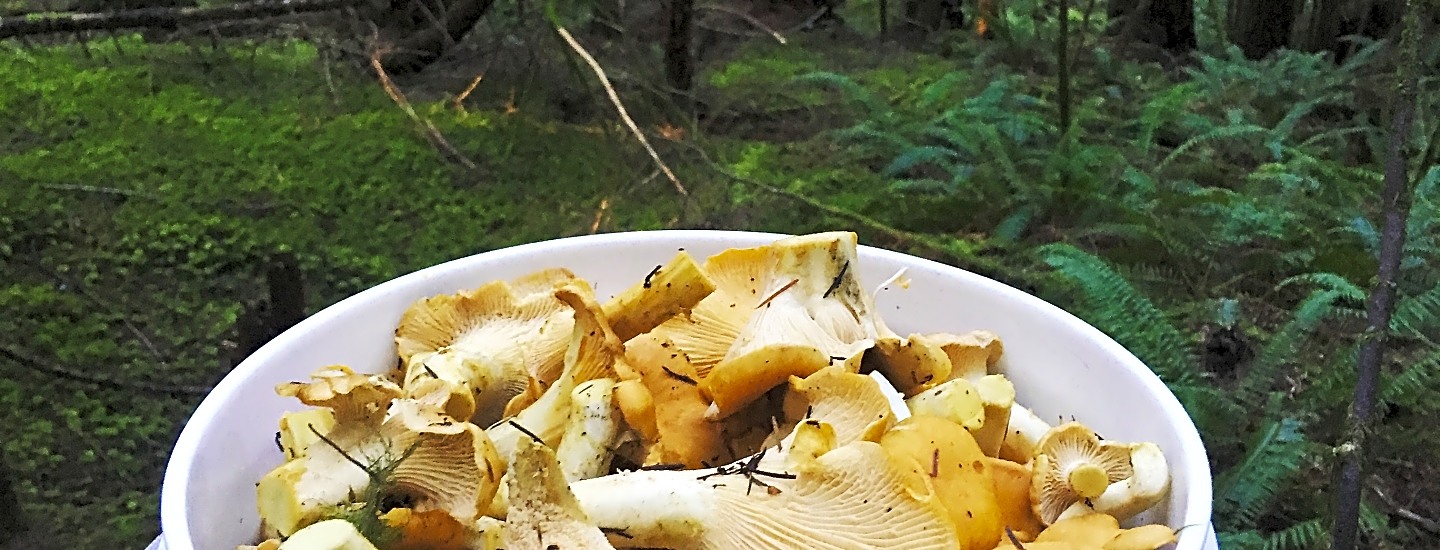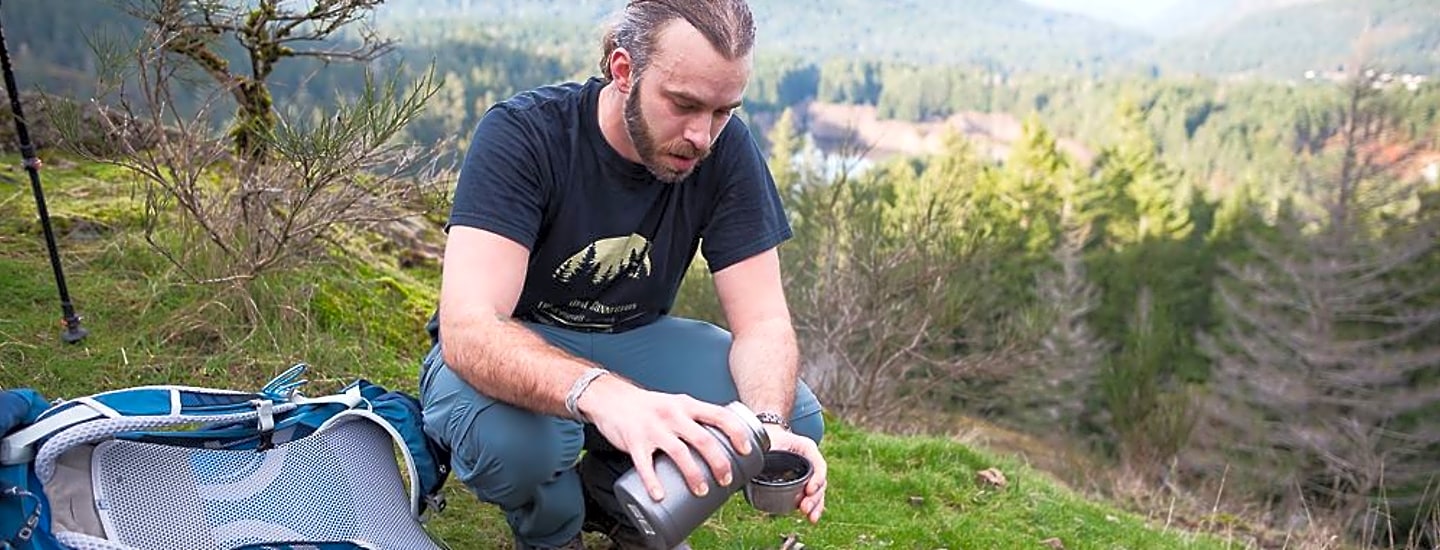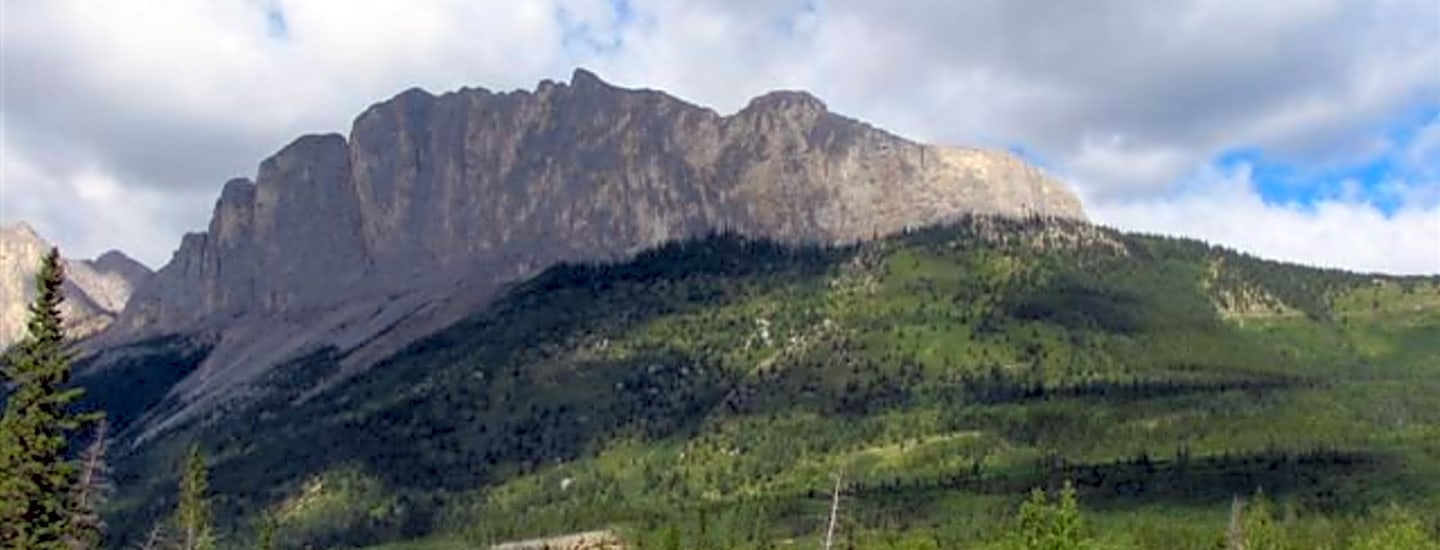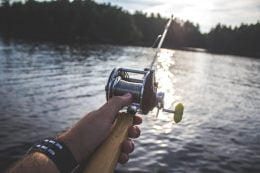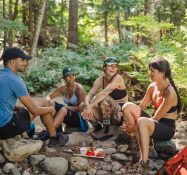Quick Tips for Cooking Outdoors
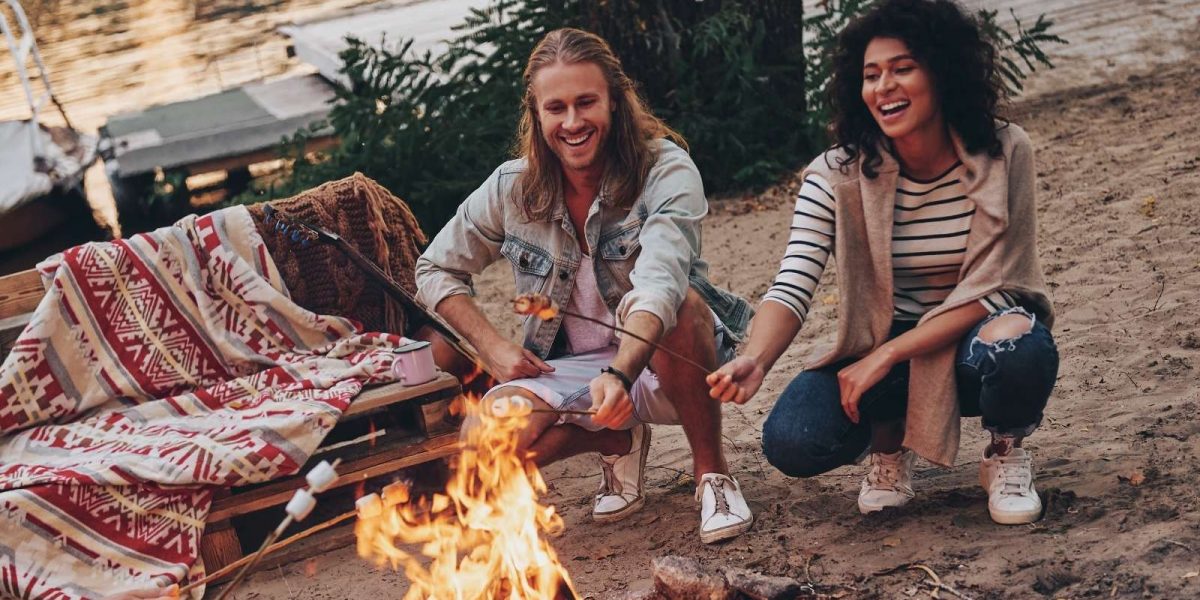
By Joshua Hergesheimer
Sometimes the best part of exploring the outdoors is falling asleep beneath a sky full of stars—snuggling into a sleeping bag, zipping into a tent, or curling up in a cozy cabin. But you won’t be able to truly enjoy those tranquil skies if your stomach is empty—luckily, cooking and sharing food around a campfire is a super fun, interactive part of camping!
There’s an unparalled enjoyment that comes from preparing, making and eating food cooked outside. Whether you’re a minimalist backpacker on a bare-bones budget, a car-camping family with a culinary streak, or a backwoods master chef. If you’re new to cooking in the great outdoors, it can be a little daunting, so here are some tips to get you started.
Put a Freeze on Freeze-Dried!
While there have been many innovations to enhance our enjoyment of the great outdoors, unfortunately freeze-dried camp food is not one of them. While the descriptions on the packages may sound appetizing (Indian curries, Thai noodles and Texas chili) often the reality is hard to swallow (literally!) so keep freeze-dried food for emergencies only.
What Equipment Do You Need?
To truly enjoy your outdoor cooking experience, you’ll need the right tools for the job. Start by thinking about your heat source and your cookware.
Bring the heat
Although the idea of cooking over a campfire is romantic, the truth is that open flame cooking is hard work. Not only do you need to rig up a way to suspend your food over the fire – not too close, yet not too far away – but also, in many wilderness areas campfires may be banned during the dry season, leaving you to nibble on cold hotdogs in the dark. Instead, bring a camp stove that burns propane, butane or white gas.
Cookware
Next, determine what kind of cookware to pack. Mountaineers summiting Everest, or climbers dangling from a cliff face will prioritize compact and feather-light cook-sets, whereas a car-camper can arrive loaded with everything but the kitchen sink. When deciding what cookware to bring, keep these three things in mind: destination, transportation and duration. Where are you going? How will you get there? And how long will you be staying?
At a minimum, you’ll want one large pot that can hold several litres of liquid, so that whether you’re making instant noodles, or boiling pasta or potatoes, you’ll have enough capacity. If possible, bring along one smaller pot to heat up sauces, stew vegetables or fry up proteins.
Pro-tip: if weight isn’t an issue, we highly recommend bringing a cast-iron pan or a griddle designed for use with camp stoves. Your inner Iron Chef will beam with pride as you sear steak and sizzle mushrooms for dinner, fry up eggs and bacon for breakfast, and grill pork chops for lunch. While not light weight, any heavyweight camp cook knows that cast-iron is worth it.
Meal Planning
Unless you plan to hunt or forage for your dinner, you’ll likely be bringing food along with you. A little advanced meal planning and preparation makes all the difference.
Carbohydrates
For starches, how it cooks determines how it tastes. Pasta and potatoes are easy to boil, while rice requires a bit more attention on a camp stove. Tortillas are another good choice, assuming you have a griddle or flat surface to heat them.
Vegetables
Fresh veggies are a treat in a wilderness setting. Carrots are easy and rewarding – peel and chop them at home, then seal in airtight containers. Not only will this save time at the campsite, but cutting up carrots on a slippery picnic table in the rain can test anyone’s patience. Frozen veggies like beans and peas from the supermarket make preparation easy-peasy.
Proteins
For proteins, beef steaks, pork chops and fish fillets are my favourites. Their shape makes them easy to pack, they cook well and taste great on cast-iron. Chicken wings sound great, but can be a challenge to cook evenly. Of course, bacon for brunch on the last day…any objections?
Pro-tip: freeze proteins in advance, and use the frozen blocks to keep other food items chilled. A frozen steak in a cooler can take days to thaw, ensuring it stays fresh until it hits the grill.
Packing the ‘less obvious’ things
When cooking outdoors, there’s really only one thing you have to remember: don’t forget anything!
All kidding aside, there are must-have items for food prep that won’t seem obvious until you realize it’s missing. Sure, you can slurp soup from the pot in a pinch — but try flipping a pancake without a spatula, slicing a steak without a blade, or stirring pasta sauce with the ball-point pen you found in the car glovebox. Actually, don’t even imagine that, it’s gross. So before you set out, be sure that you’ve packed (at a minimum) a knife/fork/spoon for each member of your crew, along with a sharp knife, a spatula (or three), a ladle and a long-handled wooden spoon.
Pro-tip: consider doing a ‘dry-run’ of breakfast, lunch and dinner at home, gathering the items and going through the motions of preparing it. It sounds silly, but role playing will alert you the fact that you don’t have a can opener when you are still arms-length from your cutlery drawer.
Not a throw-away thought: your garbage is your garbage
Anyone who enjoys the outdoors should know the expression: “if you pack it in, then pack it out.” Translated: don’t leave your garbage behind. When planning to cook outdoors, remember you will need to transport out whatever you have left.
Pro-tip: instead of bringing a garbage bag (which itself will be thrown away eventually), bring a Tupperware container to transport all your empty food packages.
Joshua Hergesheimer is an explorer, adventure motorcyclist, and a father of twin girls. He’s from Vancouver, B.C. and loves exploring the Sea-to-Sky region with his family, especially the backroads near Squamish, Whistler and Pemberton.

POWELL RIVER
Forage the Sunshine Coast
The Sunshine Coast features pristine wilderness, with everything from dark mossy forests to windswept coastal beaches — all of which are filled with seasonal delicacies. Spend an afternoon discovering wild foods and learn how they harvested and prepared in a kitchen with knowledgable Local Alexander.
SOOKE
Tea in the Trees
We’ll walk the riverside for about a half an hour, stopping along the way to identify the various plants I use for my wild tea blend. I’ll pick us enough for a pot of tea, boil some water on a small burner, and steep the wild ingredients right in front of you! Fresh muffins will be served with tea because my fiance runs her own cafe and makes such tasty goodies!
KANANASKIS
Edible Plants of Mt. Yamnuska
Mt. Yamnuska has been a sacred mountain to the Nakoda Sioux for over 400 years. This south facing slope is rich with foothills and mountain plant and animal species. Discover the huge variety of edible plants at this special place and learn how they are used by the animals, who call this mountain habitat home.

